After Sitka we went to Wrangell, which is a different sort of town in Southeast Alaska. The larger cruise ships don't go into Wrangell, so it is not overrun by tourist and gift shops, like we saw in Skagway, and to a certain degree in Sitka. We were in Wrangell four years ago, and enjoyed it very much; it was refreshing after being in places dominated by the cruise ships mentality. This time, however, our time here is short - only a day and a half.
We got into Wrangell afer dark and headed for the Shoemaker Bay RV park run by the city. We had stayed there when we were here four years ago. But the price has gotten outrageous since then - $25 per night for a site with electricity but not much else. The sites were muddy, and the bathroom is a grungy pit toilet on the other side of the muddy parking lot for the Shoemaker Bay harbor. $25 - $30 per night is the typical price for priviate campgrounds in Alaska with electricity and water, bathrooms with flush toilets, sinks, and hot showers, and often WiFi.
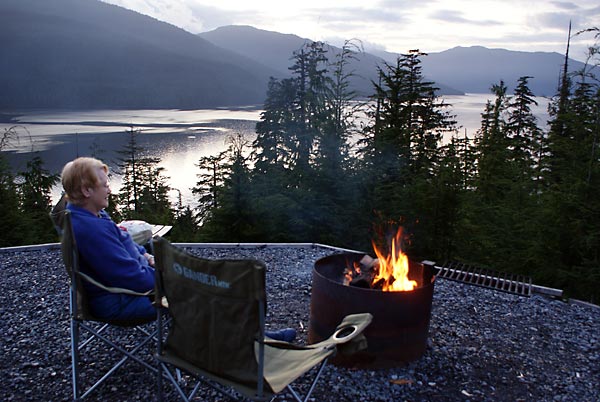
We spent the next day driving some of the forest roads on Wrangell Island, since we didn't do that last time. We found a beautiful campground run by the Forest Service; it is part of the Nemo Point Recreation Area about 15 miles south of the city of Wrangell. The campsites had a beautiful view of Zimovia Strait, free firewood, and the price was right - free. So we stayed there our second night on Wrangell and enjoyed it immensely. If we come to Wrangell again, we will skip the city camping and go straight to Nemo Point.
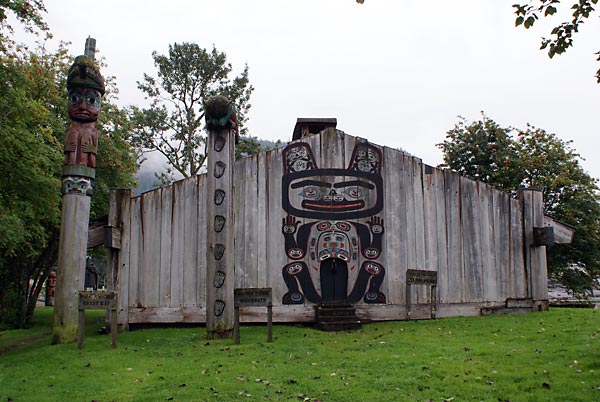
The Shakes Island tribal house is located on Shakes Island, in the middle of the Wrangell inner harbor. The tribal house was erected in 1940 as a reproduction of the historic tribal house at this location. John Muir, in his book, "Travels in Alaska", writes about coming here in the late 19th century to visit with Chief Shakes, the head of the Stikine Tlingit group. A potlach was held by the local Tlingit clan in 1940 to celebrate the rebuilding of the tribal house. The Wrangell Sentinel newspaper interviewed many of the Tlingits at that time as to the stories behind the totem poles on Shakes Island. These stories were published in 1940 and republished in the 2008 Wrangell Guide for visitors.
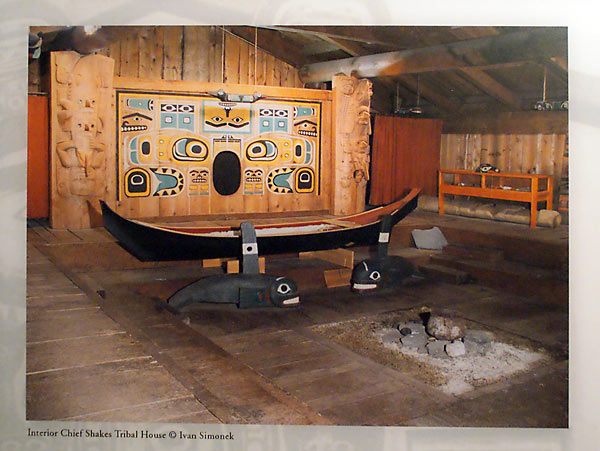
The tribal house is closed, except for tours for cruise ship passengers (I feel discriminated against!), but we found this photo of the interior in the local museum. Except for the canoe, it is the typical tribal house configuration.
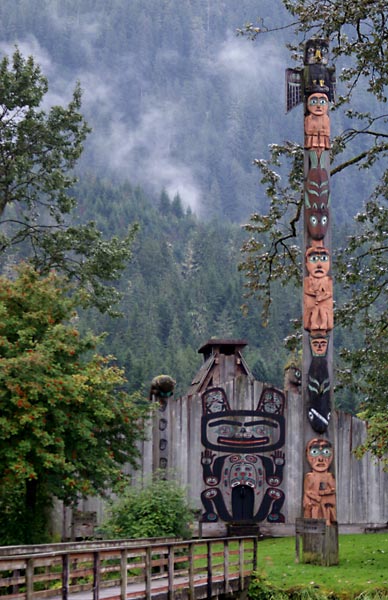
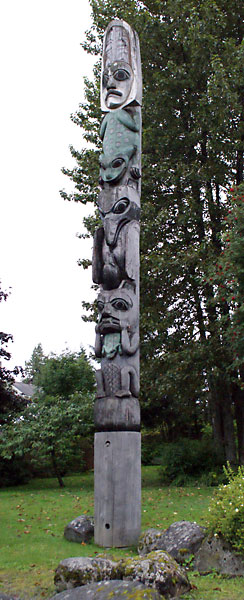
The left photo shows the totem pole in front of the Shakes Island tribal house. According to the Wrangell Guide, the lowest figure on the pole is that of a doctor who was put to death by the people in the clan. Above the doctor is the black fish; above the fish is Na-chee-su-na, who is holding an adze. The next to the top figure is Scow-qua, a legendary hunter in the Killisnoo tribe. At the top is the Eagle, which is the symbol of the Eagle moietie in the Tlingit society.
Wrangell has a totem park with a few reproductions of other local historic totem poles. The photo on the right shows the Kik.setti pole; the original pole was carved in 1895 in honor of Chief Kahlteen, head of the Kik.setti clan. According to the Wrangell Guide, "the pole is surmounted by a face which represents a mountain. This mountain was the camping place on the Stikine River... The frog below the face is the emblem of the tribe. Befoe a legendary great flood, a young man committed mischief to the frog. As a result, the man was thrown into a trance and some clansmen were going to the kill the frog. But they decided to wait until the chief returned. When the chief returned, he told the men not to kill the frog because the from was considered part of their family. Below the frog is the old Raven, the Creator, according to the legend. The old Raven is talking to the young Raven that made man. The lowest figure of all is the Killisnoo beaver."
Next we head on to Ketchikan, for our final stop in Alaska.